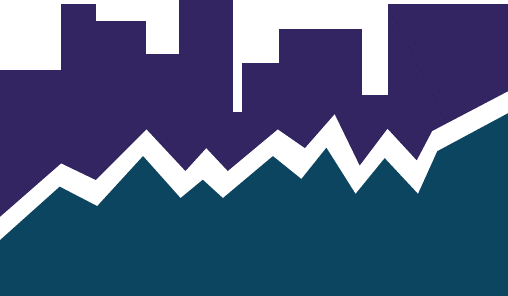By Elliot D. Pollack & Company | The Monday Morning Quarterback
Inflation cooled last month to its slowest pace in more than two years, continuing the trend of a
declining inflation rate over the past year. The consumer-price index (CPI) climbed 3% in June
from a year earlier, sharply lower than the recent peak inflation rate of 9.1% in June 2022, and
gasoline prices hit a U.S. record average of $5 a gallon. June’s rate was down from 4% in May.
According to the report, consumers paid less last month for used cars and airline fares, and their
rent increased at the slowest one-month pace since early 2022. Prices for car insurance and
recreation services rose.
While the overall inflation rate of 3.0% is good news, the core inflation rate, excluding volatile
food and energy categories, rose 4.8% in June from a year earlier. This is the slowest pace since
October 2021, and down from 5.3% in May, but still way above the Fed’s target rate of 2.0%.
Fed officials are focused on core inflation because they see it as a better predictor of future
inflation than the overall inflation rate.
Core inflation is heavily impacted by what is known as “shelter” – the cost of housing – which
represents about one third of the CPI inflation metric. Shelter rose by 7.8% in the June index and
suggests why the Phoenix CPI was running at 12% in June 2022 when the U.S. CPI was at 9.1%.
Our runup in housing costs was driving much of the inflation rate measured for the Phoenix
metro area.
Fed officials are on track to raise rates to a 22-year high at their July 25-26th meeting because
economic activity hasn’t slowed down as much as anticipated. But the June inflation report calls
into question whether the Fed will lift rates after that, as most officials projected last month. Fed
officials have said that they don’t want to overreact to one positive monthly inflation reading and
will want to make sure a meaningful trend is beginning. Whether inflation keeps declining will
depend on the economy weakening and price pressures ebbing in the months ahead.
The U.S. economy remains resilient this year despite the Fed’s rate increases, defying predictions
of an economic downturn. Hiring slowed in June but was still strong and unemployment is
historically low. U.S. economic output rose at a 2.3% annual rate during the recently ended
second quarter, according to the Atlanta Fed’s most recent estimate.
Overall, prices are going up at a slower rate overall and things are not getting worse for
American consumers. But we still are looking at a long-term effort to bring down rates to the 2%
range.
U.S. Snapshot
• The Blue Chip Economic Indicators raised their forecast for 2023, but their forecast for
2024 remained the same. The panel expects the economy to grow 1.6% in 2023, up from
1.2% last month while the 2024 forecast stayed at 0.7%. Most panelists still expect a
recession in the next 12 months.
• Initial unemployment claims dropped to 237,000 in the week ending on July 8th. This is
down from a month ago when claims were over 260,000.
• Consumer credit grew by $7.3 billion in May. All of the increase was in revolving credit
($8.5 billion). Non-revolving credit fell by $1.3 billion. The tightening of lending standards
and lower demand were the primary reason for the decrease.
• The first half of July found consumers much more positive in their outlook. Consumer
Sentiment rose to 72.6, up from 64.4 last month and from 51.5 last year. The increase was
across all of the index components and most demographic groups.
Arizona Snapshot
• Taxable retail sales for Arizona and Maricopa County grew in May. The state saw an
increase of 4.7% from a year ago and Maricopa County grew at 4.5%












